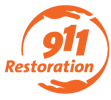How to Deal with Mold in Your Home
 Mold is one of those organisms that you can’t live with and you can’t live without. But as a homeowner, I do prefer that it stays outside of my home. Like me, chances are that you have noticed it growing in your basement, between the tiles in your bathroom, in areas of the kitchen, or even in the worst cases – on wooden structures of your home. Living in a humid climate, I’m always fighting the ongoing battle against the mold in my home. Cleaning just isn’t enough sometimes. Through my years of experience, I’ve been able to gain some knowledge that will help me answer your mold-related questions.
Mold is one of those organisms that you can’t live with and you can’t live without. But as a homeowner, I do prefer that it stays outside of my home. Like me, chances are that you have noticed it growing in your basement, between the tiles in your bathroom, in areas of the kitchen, or even in the worst cases – on wooden structures of your home. Living in a humid climate, I’m always fighting the ongoing battle against the mold in my home. Cleaning just isn’t enough sometimes. Through my years of experience, I’ve been able to gain some knowledge that will help me answer your mold-related questions.
What are the different types of common household mold?
While you and I both wish that there are no common types of household mold, unfortunately there are a total of four.
Penicillium
If you’re thinking of penicillin, then you are right. This is where the magical polio cure originates. It’s the type of mold that grows on stale bread and food as it sits in your fridge or breadbox. Ingesting this type of mold will cause irritation and indigestion, so to avoid this hazardous mishap just throw away old food.
Aspergillus
This type of mold is olive green in color and is extremely dangerous. This type of mold usually exists in homes that have a high humidity level or in areas where a plumbing leak occurs. Aspergillus produces a carcinogen known as aflatoxin, which is extremely harmful. If you find this type of mold in your home, it is best to clean it with bleach.
Cladosporium
Cladosporium is an airborne mold that settles on your home’s surfaces and on your clothing. It is greenish-blue in color with a white tuft surrounding the overall growth. While not deadly, it can be harmful to your health in large quantities. Therefore, if you spot it, also wipe it away with bleach.
What is the most dangerous type of mold?
I just had to know to make sure it isn’t something that is growing in my home. The most dangerous type of mold that can grow in your home is “Black Toxic Mold,” because it produces deadly carcinogens. It is dark green and it has a shiny and slimy surface. This type of mold usually resonates from structural or water issues within the home, such as damp insulation and wooden structures, along with broken piping or leaks.
What are the health risks from mold?
The main health risks involved with mold found in the home is immediate hypersensitivity and allergies. Those that come in contact with large quantities of mold will usually experience teary eyes, shortness of breath, wheezing, coughing, itchy throat, rashes, runny nose, and congestion. In the most serious cases, fever and flu-like symptoms may occur, along with nose bleeds, vomiting, and liver damage. If you think that you have been exposed to mold and are suffering from the above symptoms, it is best to get your home inspected to find the source and to contact your physician.
What should you do if you find mold in your home?
When it comes to household mold, there is a difference between a small patch growing in a particular area to a major growth within the structure of your home. If you are experiencing the first case, the best solution is to clean it up with bleach and toss out anything that the mold has grown on, such as food or an object. On the other hand, if the mold is from your home’s walls or internal structure, you need to contact a mold remediation specialist and have it safely and professionally removed. Here in Charlotte where it can get a bit on the humid side, an excellent option is to install a dehumidifier in your home. It will reduce the moisture levels, increase your home’s comfort, and help prevent mold growth.



